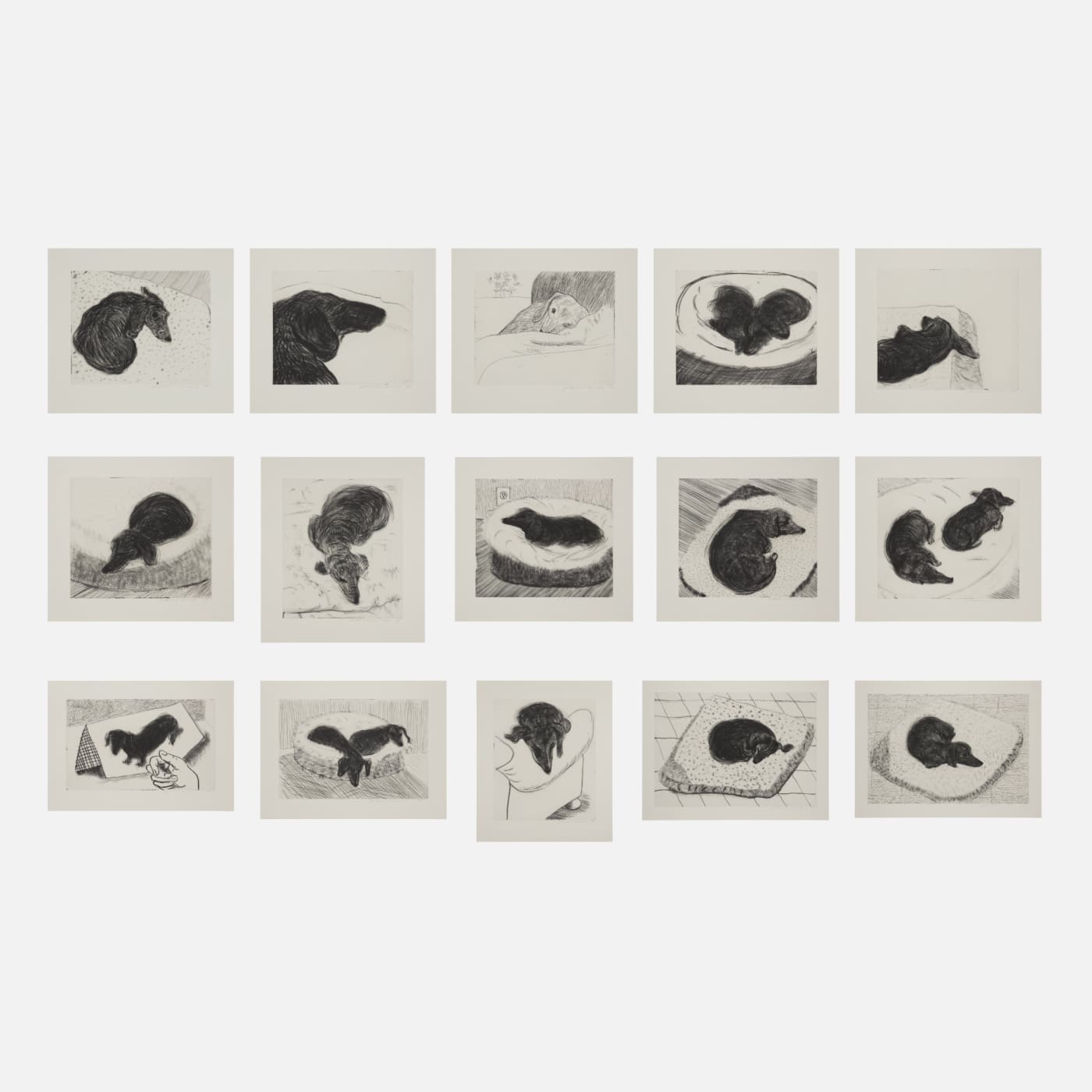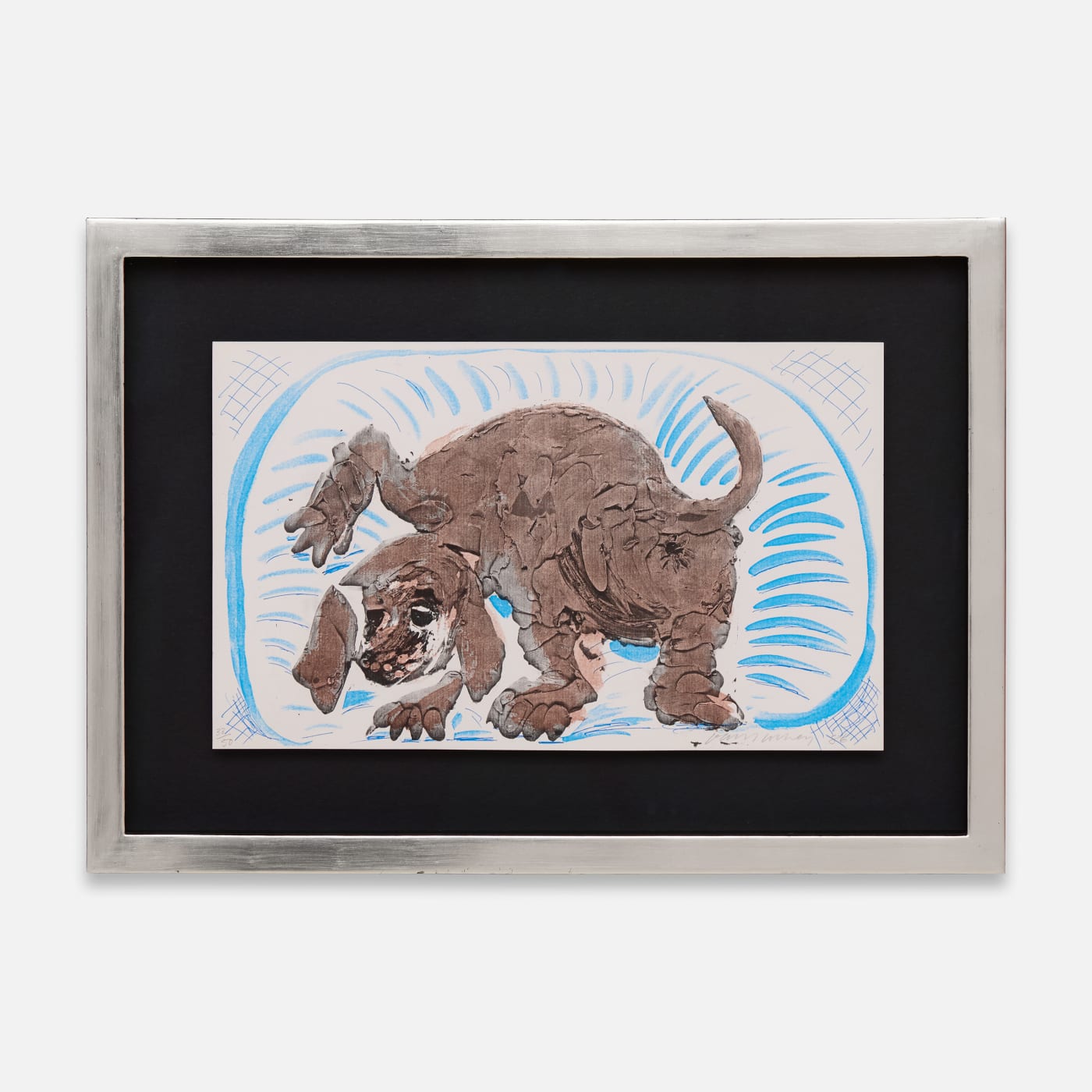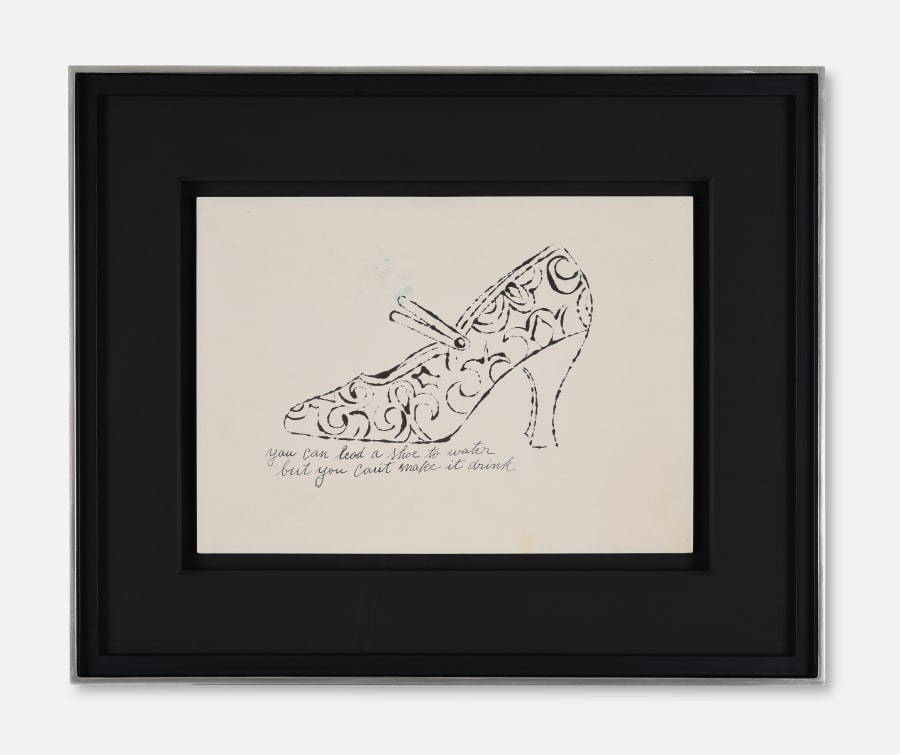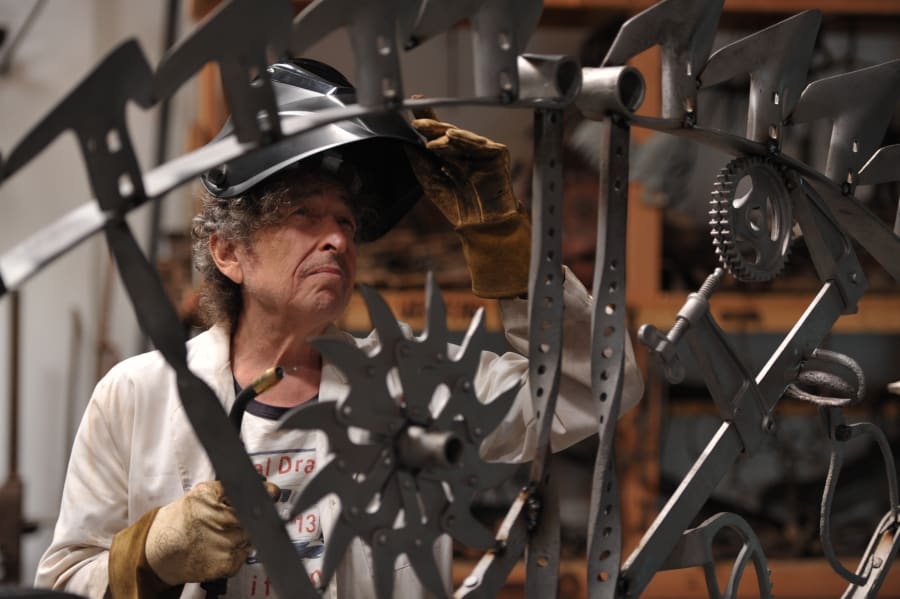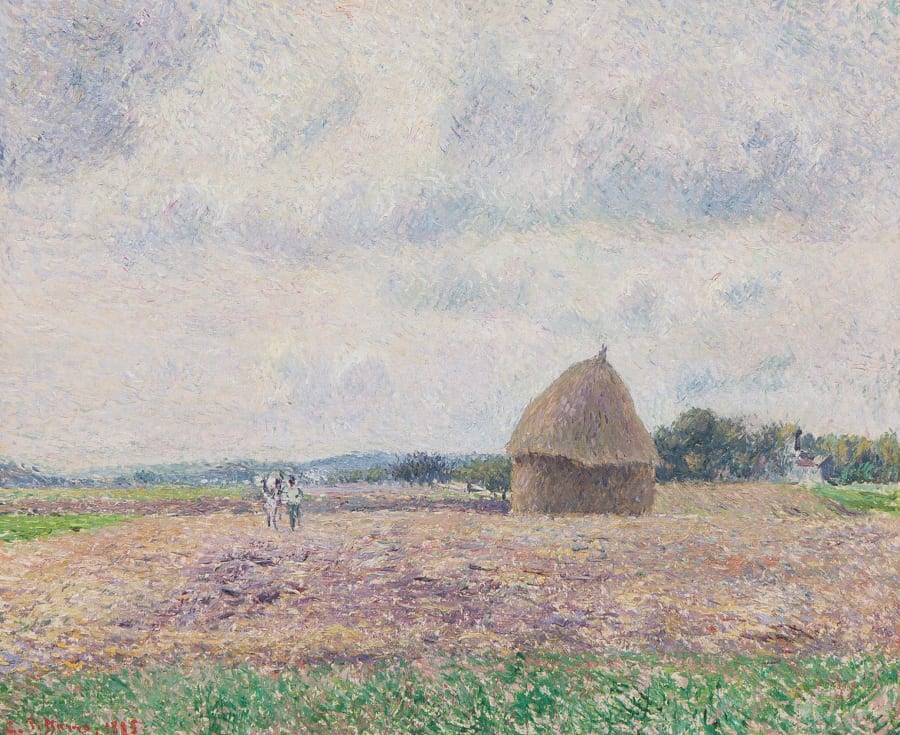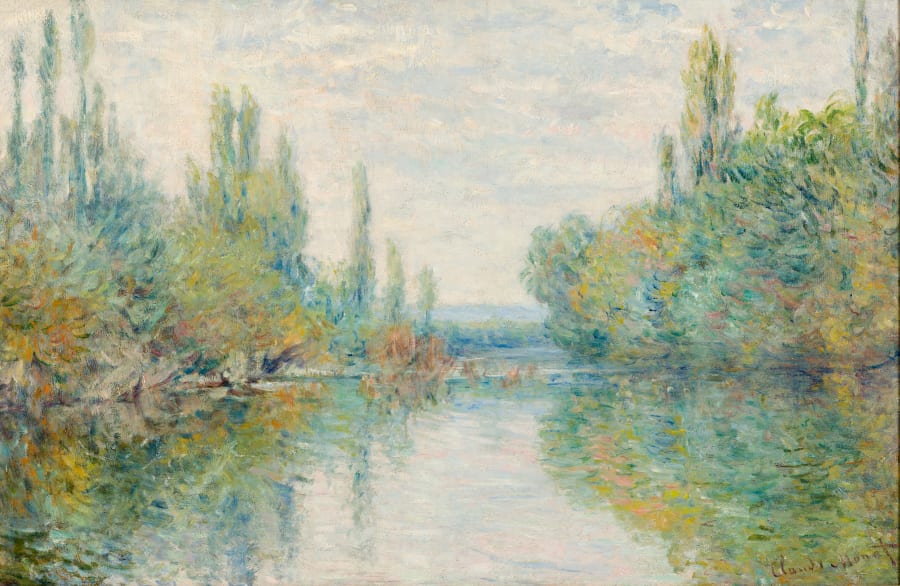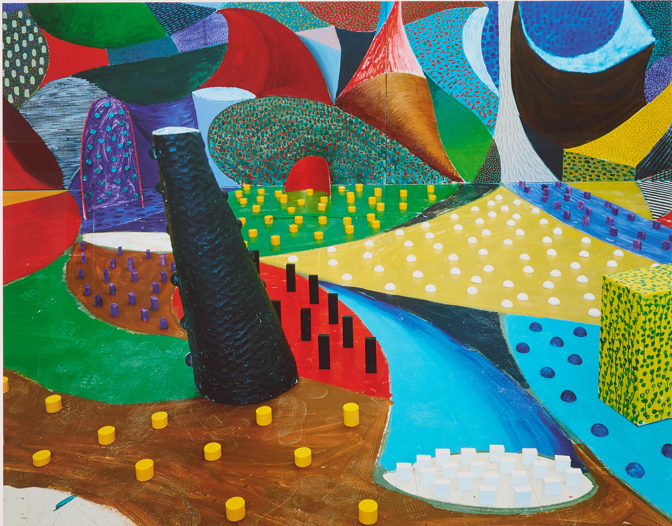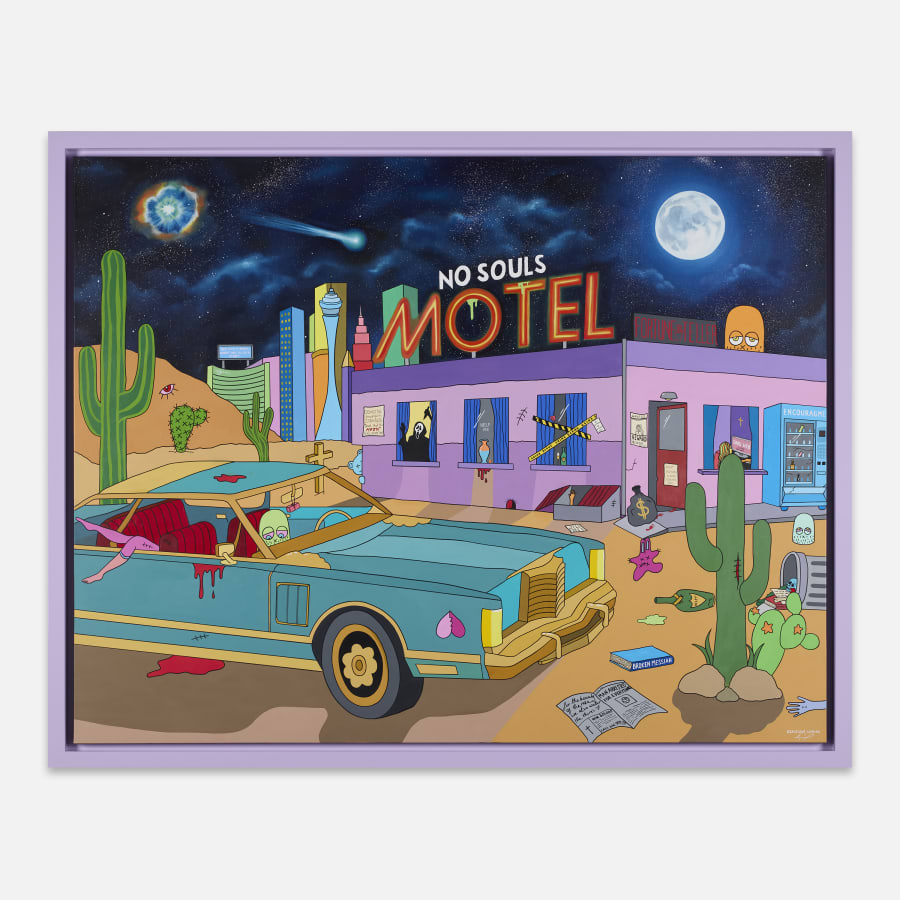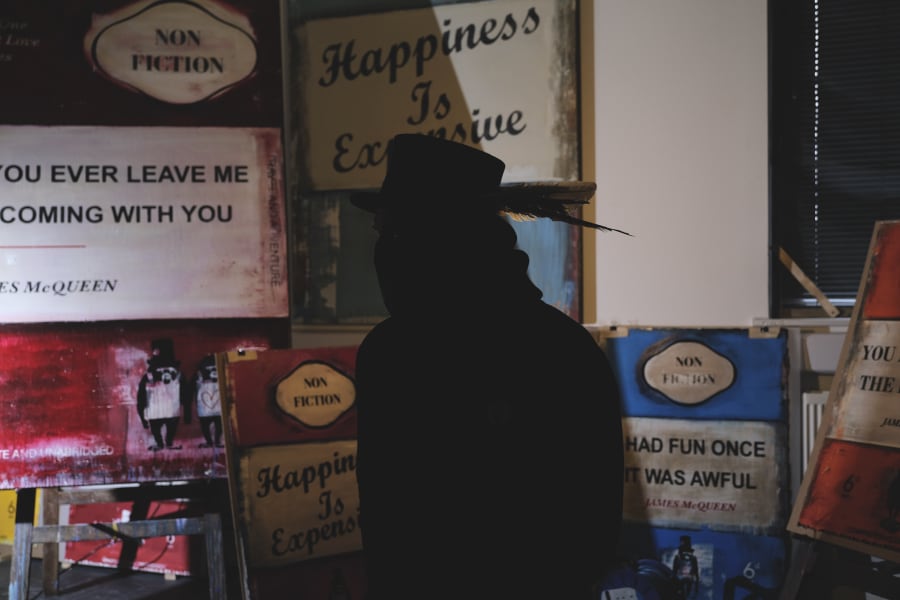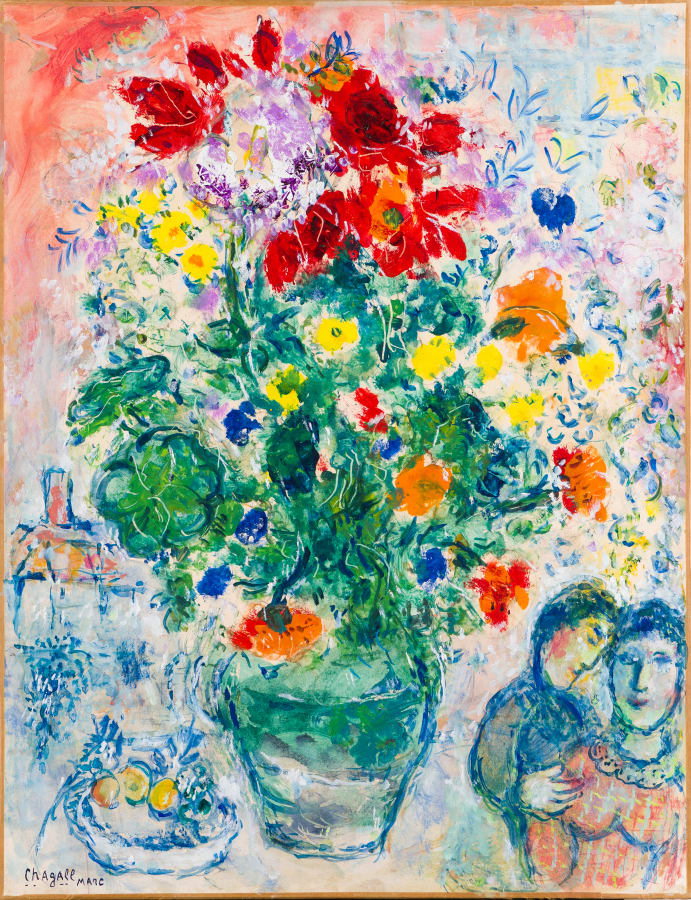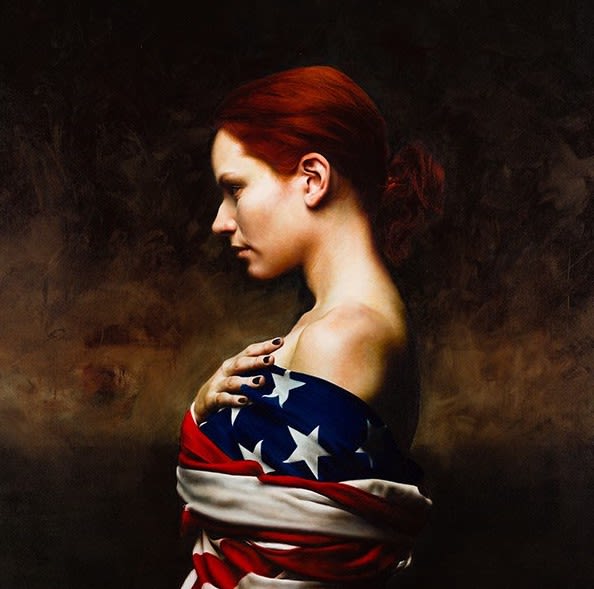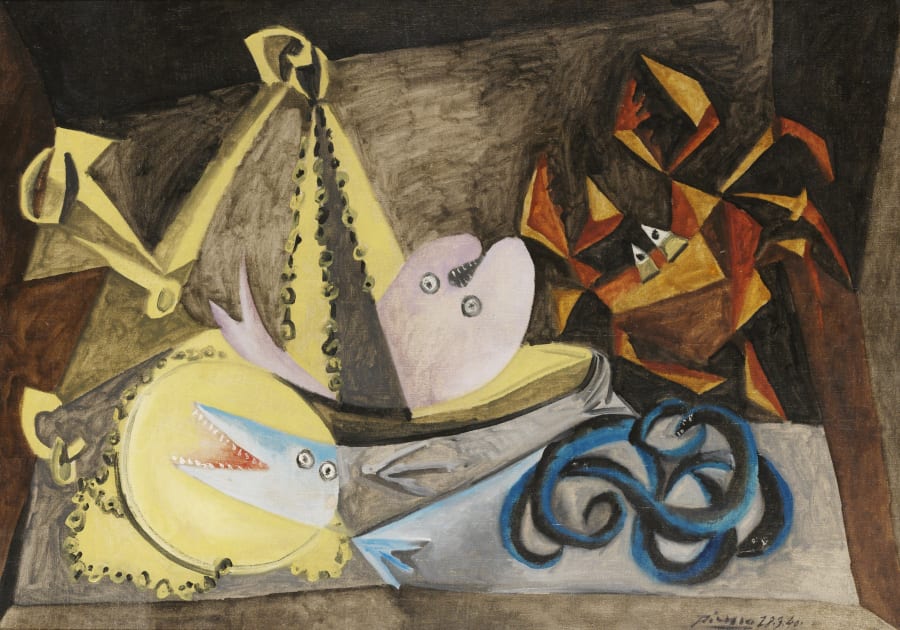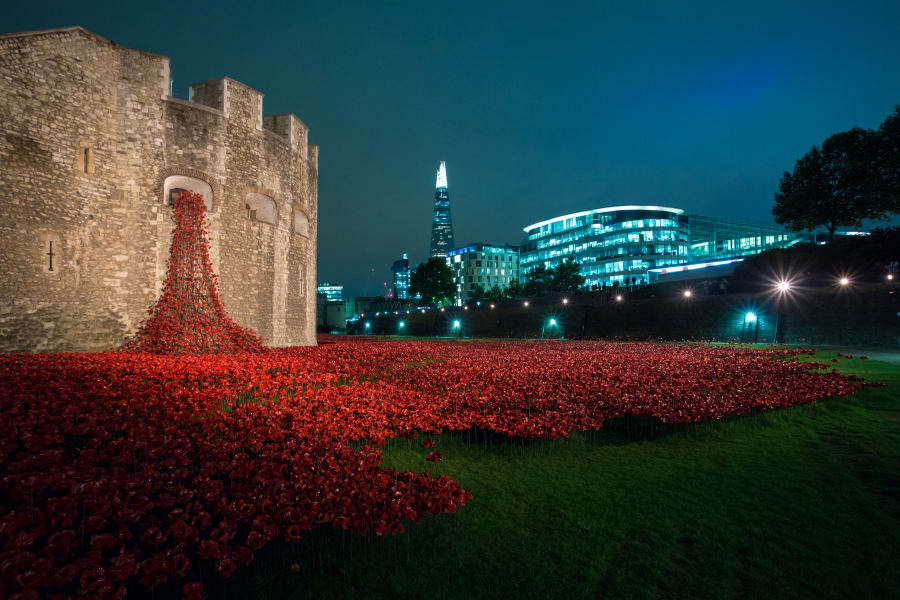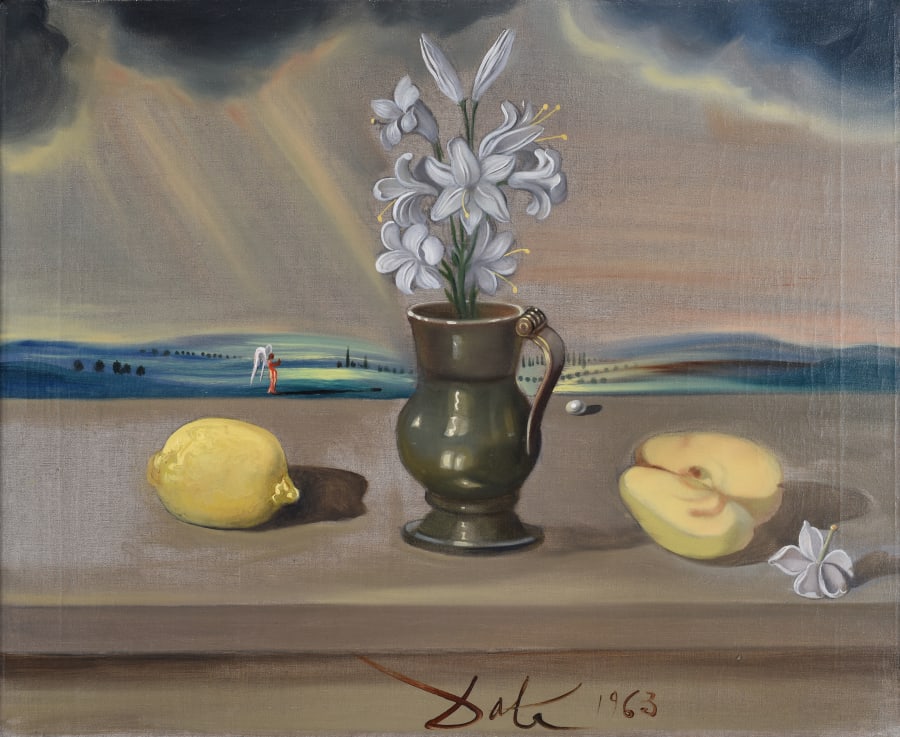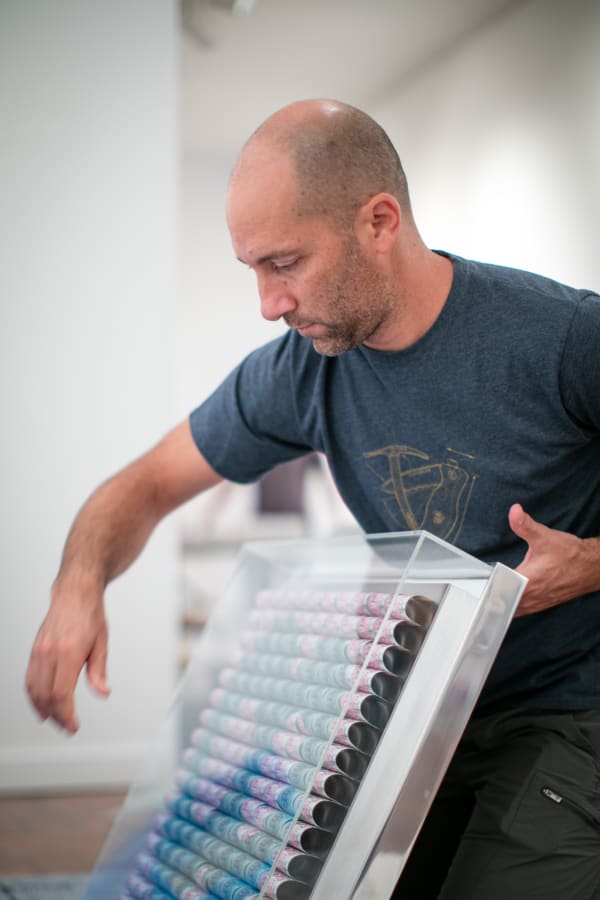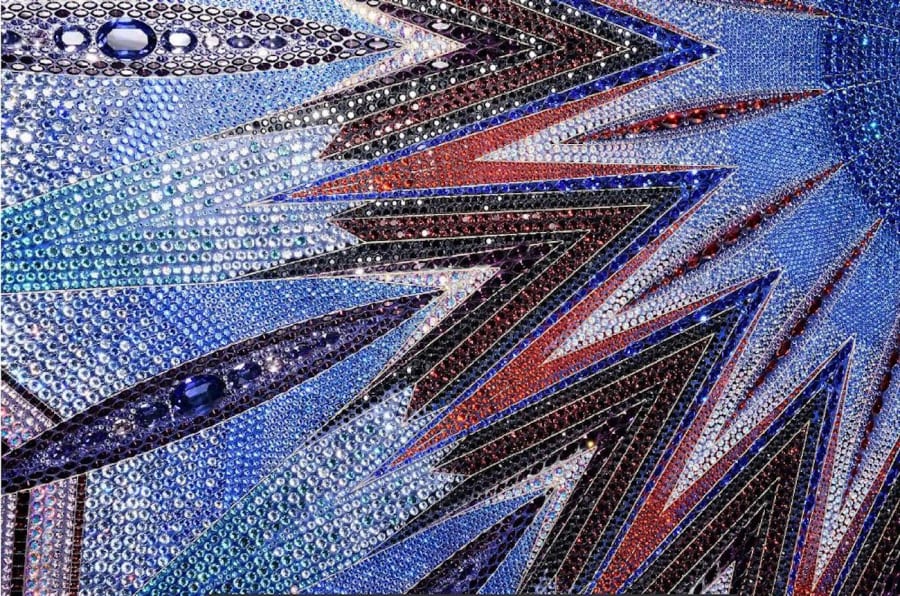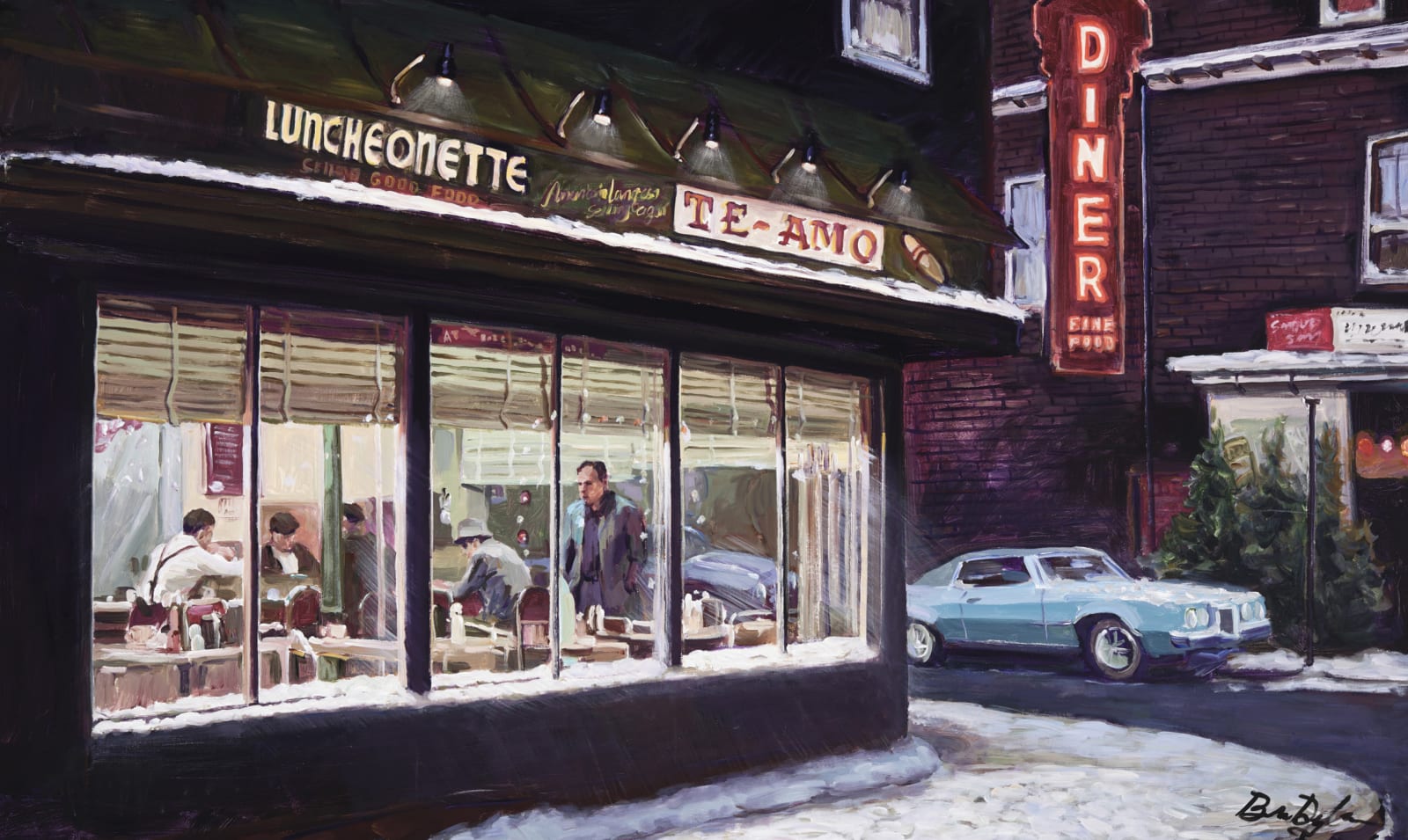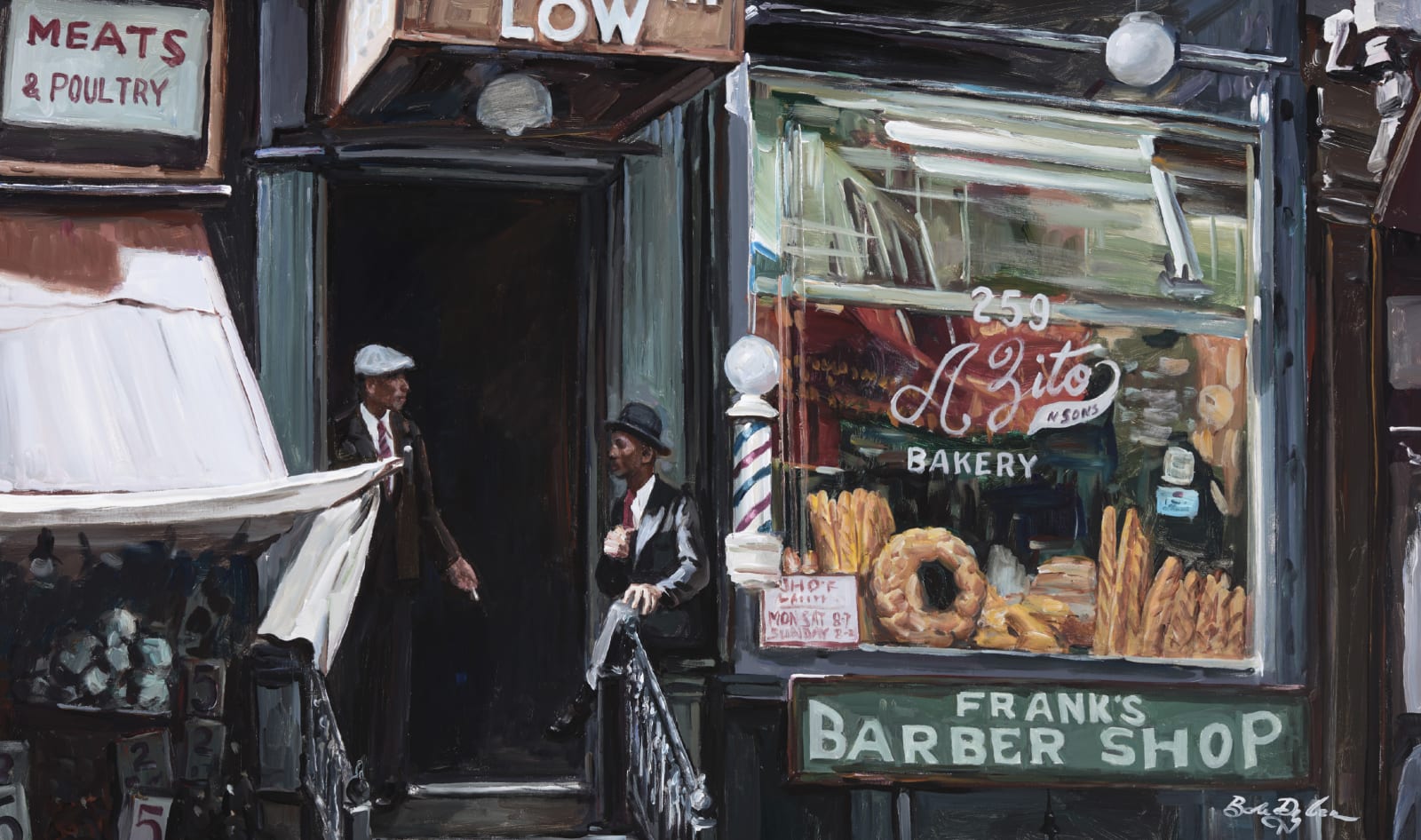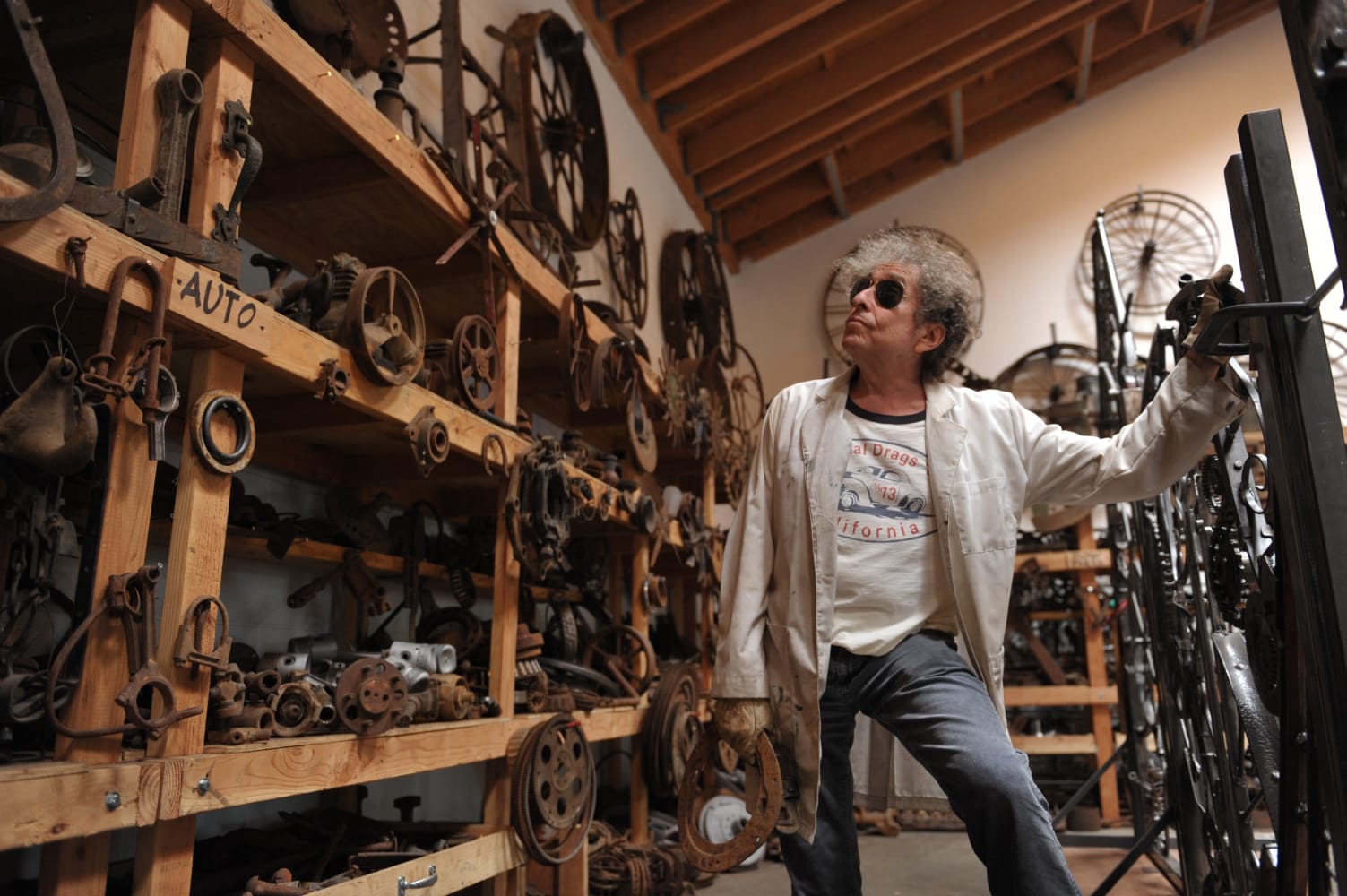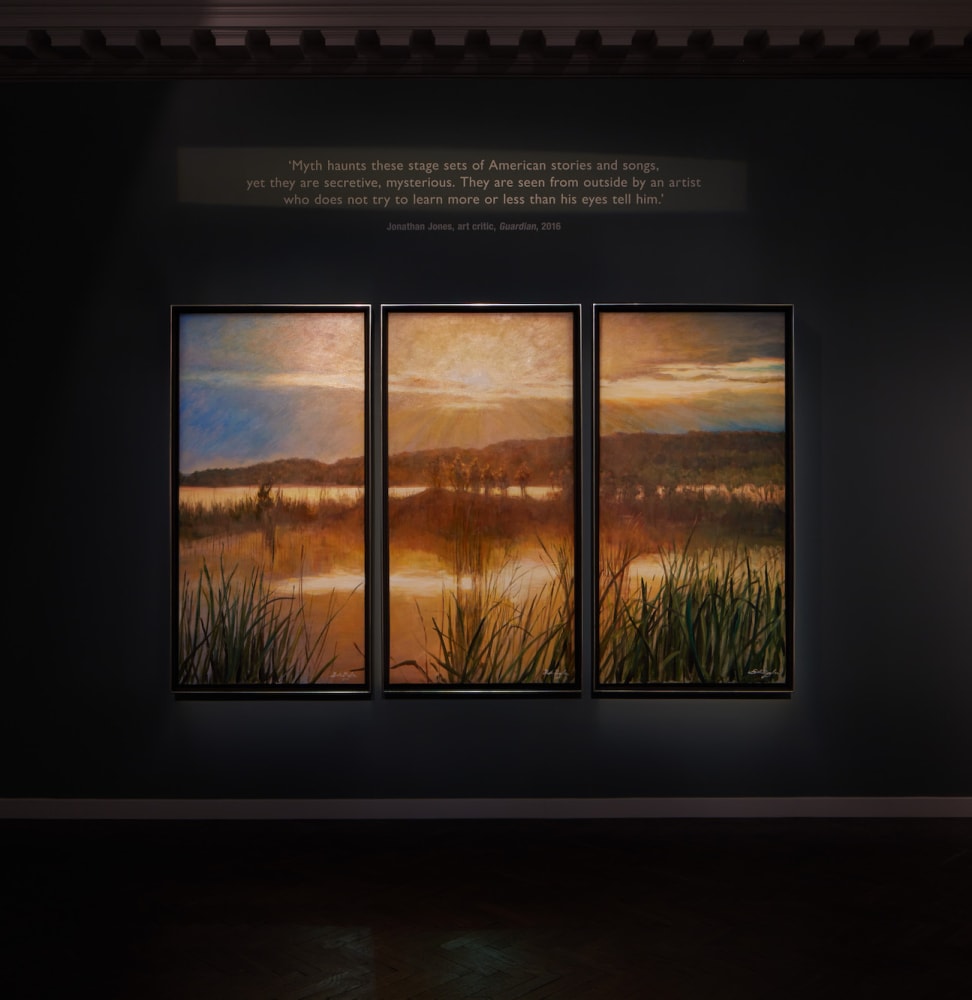

David Hockney's Dachshunds
David Hockney's Dachshunds
Five Things to Know
/
David Hockney's deep affection for his Dachshunds is a central theme in much of his artistic output. His portrayal of them captures both their personalities and the profound bond he shared with them.
Through his dog portraits, Hockney not only finds joy in the simplicity of everyday life, but also delves into broader art traditions, creating works that are at once playful and deeply reflective.
If you are interested in adding to your collection speak to one of our art consultants now - email us at info@halcyongallery.com

David Hockney, Dog Wall, 1988 (detail)
Many of David Hockney’s works owe to the deep affection he felt toward his Dachshunds and close companions, Stanley and Boodgie. These two playful pups became icons within his oeuvre, appearing in hundreds of pictures across a range of mediums. Hockney’s tender depictions capture their personalities with sophistication and sensitivity. Dog Days (1995) was one of the first major series he created featuring his dogs, though this theme proliferated for many years resulting in iconic portfolios like Dog Wall (1998). With these works, Hockney was able to explore his pursuits in composition, colour and perspective, while alluding to more historic art traditions in portraiture.
‘I realised I was painting my best friends, Stanley and Boodgie. They sleep with me; I'm always with them here. They don't go anywhere without me and only occasionally do I leave them. They're like little people to me. The subject wasn't dogs but my love of the little creatures.’
David Hockney
‘These two dear little creatures are my friends. They are intelligent, loving, comical and often bored. They watch me work; I notice the warm shapes they make together, their sadness and their delights. And, being Hollywood dogs, they somehow seem to know that a picture is being made.’
David Hockney


